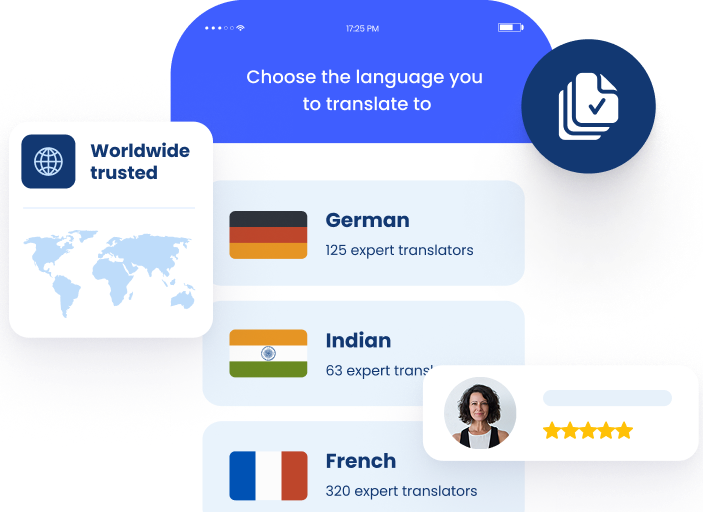Interpreting for Legal Settings: Guide to Certified Services for Courts, Depositions & Hearings
Every word spoken in a courtroom carries weight, and when one of those words is misunderstood, the entire proceeding is compromised. For people with Limited English Proficiency (LEP), professional legal interpreters are the bridge between exclusion and meaningful participation. A mistranslation can inconvenience counsel, void testimony, alter evidence, or even lead to wrongful convictions.
Language access in judicial processes is required by law, as stated under the Title VI of the Civil Rights Act of 1964. Provided that a court is funded by the federal government, it must provide language access to LEP participants.
This guide explains how legal interpreting works, what delivery models are available, the ethical rules that govern interpreters, and how to approach hiring and budgeting. Most importantly, it provides a framework for choosing reliable partners who can withstand the scrutiny of courtrooms and appellate review.

How Legal Interpreting Works in Practice
Professional interpreting is not a matter of bilingual convenience. A certified legal interpreter is trained to function under pressure, with mastery of legal terminology and a relentless commitment to neutrality. Their role is not to simplify or paraphrase but to reproduce language faithfully, preserving hesitation, tone, and register.
Consider a deposition where a witness states, “I… I think the chart may be wrong.” An untrained bilingual assistant might inadvertently flatten this into “The chart is wrong.” The first reflects uncertainty; the second implies confidence. Such a difference may affect how liability is determined and how counsel proceeds.
Legal professionals also play a role in ensuring accuracy. Interpreters cannot succeed if attorneys speak over each other or rush testimony. Sharing pleadings and reports in advance and pausing appropriately during questioning enables interpreters to deliver precise results. In this sense, legal interpreting is a shared responsibility, meaning both the interpreter and the legal team contribute to creating a faithful record.

Native vs. Non-Native English Speakers Worldwide
According to the above estimates, only about 373 million out of the 1.5 billion English speakers are native speakers. The remaining 1.1 billion, or roughly three out of four English speakers, use it as a second language.
This imbalance illustrates English’s role as a global lingua franca. It is no longer concentrated in countries such as the United States, the United Kingdom, or Australia. Instead, its growth has been fueled by learners in India, Nigeria, and the Philippines, where English proficiency opens doors to higher education, international markets, and upward mobility.
For businesses, this means that most interactions in English will occur with non-native speakers. Communicating across accents, idioms, and cultural expectations often requires patience and, in high-stakes contexts, professional support to avoid misunderstandings.
Delivery Modes in Courts and Hearings
Not all proceedings require the same method of interpretation. Courts and firms typically rely on three delivery modes: in-person, video remote interpreting (VRI), and telephonic on-demand services. Each has advantages and demerits.
In-person interpreting remains the preferred standard for evidentiary hearings and trials, where subtlety and credibility are at stake. Judges and juries need to observe body language, tone, and cadence in tandem with interpretation. Remote solutions, while valuable, cannot always replicate this.
Video remote interpretation for hearings
VRI connects courtrooms to certified interpreters through secure video platforms. Courts use it when on-site interpreters are unavailable or when a proceeding is short and procedural, such as a status conference.
Compliance here is as much technical as linguistic. Systems must provide stable audio, at least 720p resolution, and adequate screen sizes (minimum 19 inches for courtrooms). Secure channels are required for privileged attorney–client communication, and all parties must consent to VRI use on the record. If the connection fails, the interpreter or any party can request suspension until communication is effective.
For ASL proceedings, protocols are stricter. This means interpreters cannot use virtual backgrounds that obscure hand movement, and platforms must allow multi-pinning so the deaf litigant can see the interpreter, a Certified Deaf Interpreter, and the judge simultaneously.
On-demand legal interpretation for urgent cases
Telephonic services deliver access to interpreters within minutes. They are practical for emergencies such as an attorney conducting an intake with a newly detained client who speaks a rare dialect. Courts allow phone interpretation for brief, non-evidentiary situations where delay would violate rights.
But convenience comes at a cost. On-demand interpreters are rarely court-certified and may lack legal training. They can handle routine exchanges but are risky for testimony or complex proceedings where accuracy cannot be compromised. The trade-off between speed and quality must be weighed carefully.
Simultaneous vs. consecutive interpreting in court
Two interpreting modes dominate courtrooms.
- Consecutive interpreting: The speaker pauses; the interpreter renders the statement. This is the standard for sworn testimony and depositions. It achieves high accuracy and produces a clean, orderly record.
- Simultaneous interpreting: The interpreter speaks almost in real time. This helps LEP defendants or parties follow the entire proceeding but has lower accuracy in studies and errors often go uncorrected.
Federal law requires consecutive interpreting for witness testimony unless a judge authorizes otherwise. Accuracy, not speed, dictates the mode.
Sight translation of legal documents
Sight translation occurs when interpreters orally render written documents, such as contracts, emails, or exhibits, during proceedings. It is distinct from certified written translation, which produces formal documents accompanied by a signed certificate attesting accuracy. Both have their place, but only certified translations can be filed officially.
Confidentiality Accuracy and Ethics Standards
The NAJIT Code of Ethics defines the pillars of professional conduct. Firms that fail to ensure compliance expose themselves to risk.
- Accuracy and completeness: Interpreters must convey every word and nuance, including false starts and tone. They cannot paraphrase or simplify testimony.
- Impartiality: Interpreters must remain neutral, avoid non-verbal cues, and disclose conflicts of interest. Using friends or relatives as interpreters is prohibited.
- Confidentiality: Interpreters are bound by attorney–client privilege. NDAs should be standard in every engagement.
- Limitation of practice: Interpreters may not explain legal concepts or offer advice; they are confined strictly to linguistic conversion.
These standards ensure LEP participants receive the same access to justice as English-speaking parties, no more and no less.
Common Use Cases in Legal Settings

Interpreter for police interviews
Police interrogations often set the course of a case, but interpreters are not constitutionally guaranteed at every stage. Using bilingual officers is a conflict of interest and can lead to confessions being suppressed. Best practice is to demand a certified interpreter from the start to protect both client rights and evidentiary integrity.
Interpreting for mediations and arbitrations
In ADR, interpreters uphold principles of impartiality and self-determination. Mediators should brief interpreters beforehand, instruct parties to speak directly to each other, and control the pace of dialogue so interpreters can provide accurate consecutive interpretation. Without these practices, settlement processes risk miscommunication and invalid outcomes.
Interpreters in civil litigation and criminal trials
Qualified interpreters are a matter of due process in both civil and criminal proceedings. Criminal defendants are entitled to interpreters at no cost, while civil cost allocation varies but cannot bar indigent parties from access. Courts follow a hierarchy of credentials: certified first, then registered, and lastly non-credentialed interpreters deemed qualified when higher tiers are unavailable.
Hiring a legal interpreter for depositions
Depositions are transcribed exactly as spoken, so there is no margin for error. Best practices include:
- Hiring certified interpreters only.
- Providing case files, captions, and glossaries in advance.
- Using consecutive mode exclusively.
- Preparing deponents to answer in short, clear segments with pauses.
- Scheduling two interpreters for depositions over 60 minutes to avoid fatigue.
Using these steps reduces the risk of errors that could compromise the record.
Choosing the Right Legal Interpreting Partner

Choosing an interpreter is never a matter of convenience. It is a compliance decision that directly impacts the integrity of your case. The right partner goes beyond providing bilingual ability. Instead, they bring verifiable certification, subject matter expertise, strict adherence to ethics, cultural awareness, and transparent pricing. Treating interpreters as strategic allies rather than one-off hires helps firms minimize liability, preserve fairness, and maintain credibility in court.
This is where The Language Doctors comes in. With a network of certified interpreters, tested experience across diverse legal settings, and a commitment to both accuracy and confidentiality, we help law firms and courts meet the highest standards of language access. Work with us today for guaranteed professional and reliable interpretation services.


